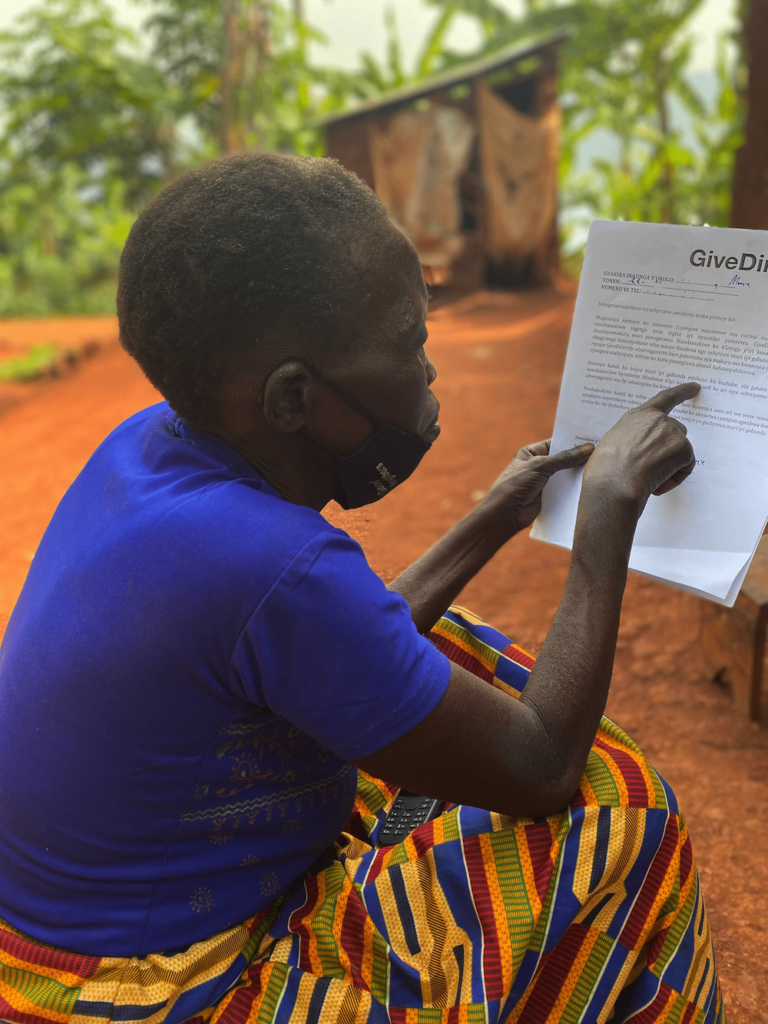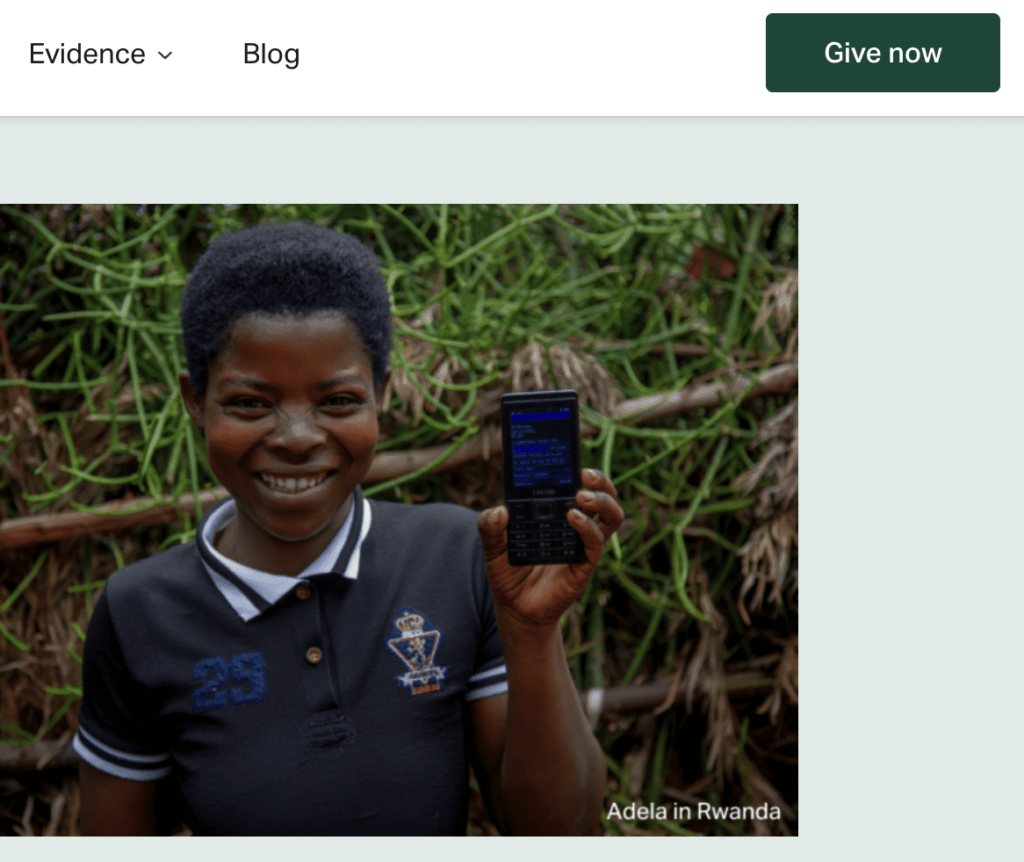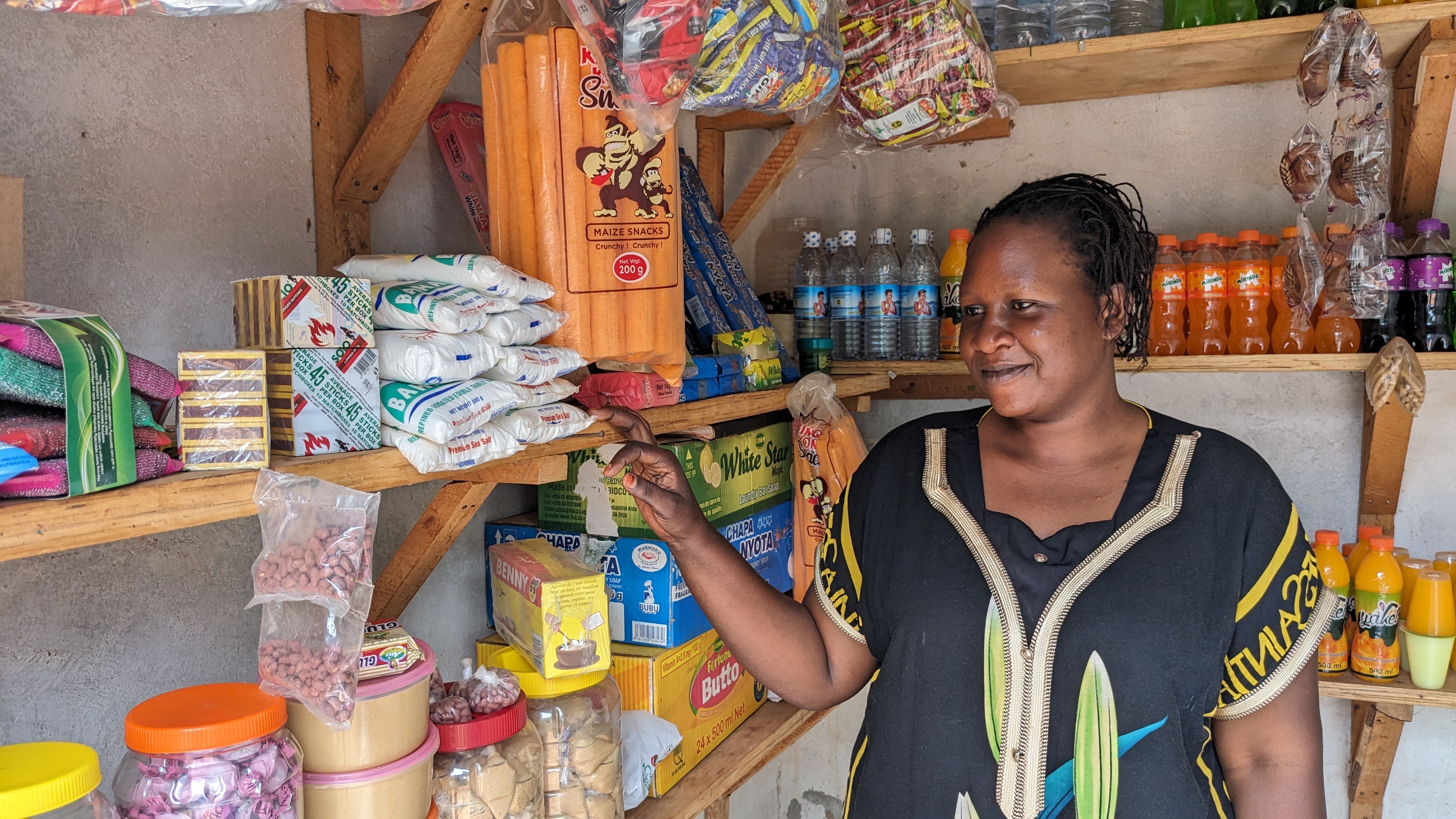“The sight of a child so starved he’s too weak to cry… it’s enough to make the angels cry,” says Sally Struthers, strolling through a slum in an unidentified south Asian country. These Christian Children’s Fund ads, which ran for two decades, exemplify the ‘poverty porn’ trope still employed by many charities––a practice so ubiquitous it’s earned a satiric awards series spotlighting the worst examples.
Creators claim these campaigns are necessary to raise awareness and donations, a defense that underscores a difficult tension: how can charities show their impact on people suffering without eroding the dignity of the sufferer? Tolu Ogunlesi, editor of The Africa Report, calls this “the unanswerable question,” signaling the impossibility of presenting poverty perfectly. In that spirit, we’ll explain how GiveDirectly tries to get storytelling as least wrong as possible and the mistakes we’ve made along the way.
We aim to document people in poverty ethically and honestly
Extreme poverty is defined by economists but lived by real people. Sharing their stories amplifies the voice of communities rarely listened to and is vital to helping donors understand the realities they face. You can read “17.4M Yemenis are food insecure,” but research shows you’re more likely to remember and respond to Omar’s story of fleeing violence and struggling to feed his family. Stories humanize the problem and, yes, raise more money, but they do come with risks.
First, we get consent and make sure it’s as informed as possible
People in poverty are often documented without their consent, in what photojournalist Chester Higgins calls “theft pictures.” For one example, listen to the story of how this famous magazine cover of 12-year-old Afghan refugee Sharbat Gula was captured.
GiveDirectly only documents recipients with their formal consent, or in the case of minors, both their and their parents’ consent. They opt to sign a plain-language form translated into local languages, which they are given to keep. If they are unable to read the form, our staff reads it aloud. Our form aims to explain two things to recipients:
- We emphasize that receiving aid is not contingent on sharing their story. This is vital because communities in poverty are used to aid groups arriving with a list of conditions––farm with this tool, read your kids this book, pose for this photo––in order to receive urgently needed help, habituating them to say ‘yes.’ GiveDirectly tracks if recipients know they can decline without consequences through focus groups and overall rejection rates (44% last year over all our programs).
- We explain that their story may be shared publicly across the internet. While some recipients have high media literacy (e.g., starting a LinkedIn page), most in rural areas do not––in many villages, we’re issuing over 75% of residents their first mobile phone. To bridge this gap, we show them examples of other stories on the internet and explain many people around the world may see their story.

We identify who they are and where they live
Using identifiable people as unnamed stock images unnecessarily flattens the experience of poverty. Design has limitations––we cannot capture someone’s full interiority in display ads––but at a minimum, GiveDirectly includes the first name and country of individuals we photograph.
This is an admittedly low bar, but one that is rarely met by others. Open up the website of another charity and ask how many of their portraits display the subject’s name and nationality? These often Black and Brown subjects are paired with headlines about poverty, stripped of any context as to who they are, where they live, or why they specifically were featured. Getting this right isn’t easy, but we encourage other charities to adopt the first-name-and-country standard.

We show audiences the real thing, and lots of it
Giving money directly to people in poverty recognizes both the dignity of the individual and the diverse needs within a single community. Our stories try to represent these same values. Early on, we were inspired by documentarians. Brandon Stanton’s Humans of New York blog particularly stood out for its candid captions, which are entirely direct quotes from the subject telling their own story, and its sheer breadth, highlighting a wide range of discrete experiences of people in the same place.
In that spirit, rather than having a copywriter summarize people’s experiences, we try to give the audience a fuller, unfiltered picture in a few ways:
- sharing raw footage and direct quotes as often as possible
- experimenting with giving recipients the camera or the pen
- hosting an unfiltered storyfeed showing the variety of ways people use their funds, posted without curation or editing, so they can share their authentic state regardless of how “successful” or “intriguing” it might be

We center the recipient, not the organization
Our stories center on the recipient having the solution to their own challenges. It’s not false humility to say GiveDirectly isn’t that responsible for the impact: a donor gives some of their wealth to a person in poverty, who then spends it to improve their life and community––we simply deliver the money. This is unlike the storytelling of some other aid groups, who publicize how they saved the poor from suffering.
And while we use stories of people in poverty to highlight our work, we also use our work to highlight stories of people in poverty. There are two ways we do this:
- when press wants to interview us, we ask that they also quote directly from recipients of the relevant program (e.g., Forbes & New York Times)
- when hosting visitors to see our work in person, we don’t control who they talk to
“When I visited Kenya, GiveDirectly enabled me to randomly select households to visit. On any site visit, donors should expect that organizations are aiming to shape a compelling narrative of their impact, so I loved that GiveDirectly helped me see a more representative picture of their work.”
Elie Hassenfeld, CEO of GiveWell
We’ve made mistakes in our storytelling
In our decade of work, our storytelling style has progressed. It’s useful to look back on some ways we erred, as it informs our thinking going forward.
- We underinvested in sharing recipient stories early on. As a research-driven organization, we thought statistically significant improvements to food insecurity indices told the story well enough (0.01 p-value deviation! Cue the Sarah McLachlan). Many of our wonkiest donors agreed, so we didn’t prioritize documenting the human side in the first few years.
- We shied away from showing the realities of extreme poverty. Turned off by overwrought imagery we saw from others, some of our storytelling skipped over the harsh “before” picture to focus on the more empowering “after” cash transfers. We assumed our audience understood the general severity of extreme poverty, so we focused on the good news. This omission sold short the challenges people in poverty are facing and the full impact of your donations.
- We used inscrutable consent forms. For several years, we used a boilerplate image release form written in such dense legalese that our own staff could barely understand it. While some binding contractual language is required, this form certainly did not receive informed consent (read our new one).
- We did not identify people’s names or countries. Until 2021, we often used images of recipients on our website and social media pages without identifying their first name or nationality––we simply did not consider the alternative. While we’ve since switched these out in our own materials, some well-meaning supporters still circulate these older images on their fundraisers and pages.
We’ll no doubt realize new mistakes in the future. As we continue to improve our practices, we’d love to hear your thoughts. Send us feedback at info@givedirectly.org.

